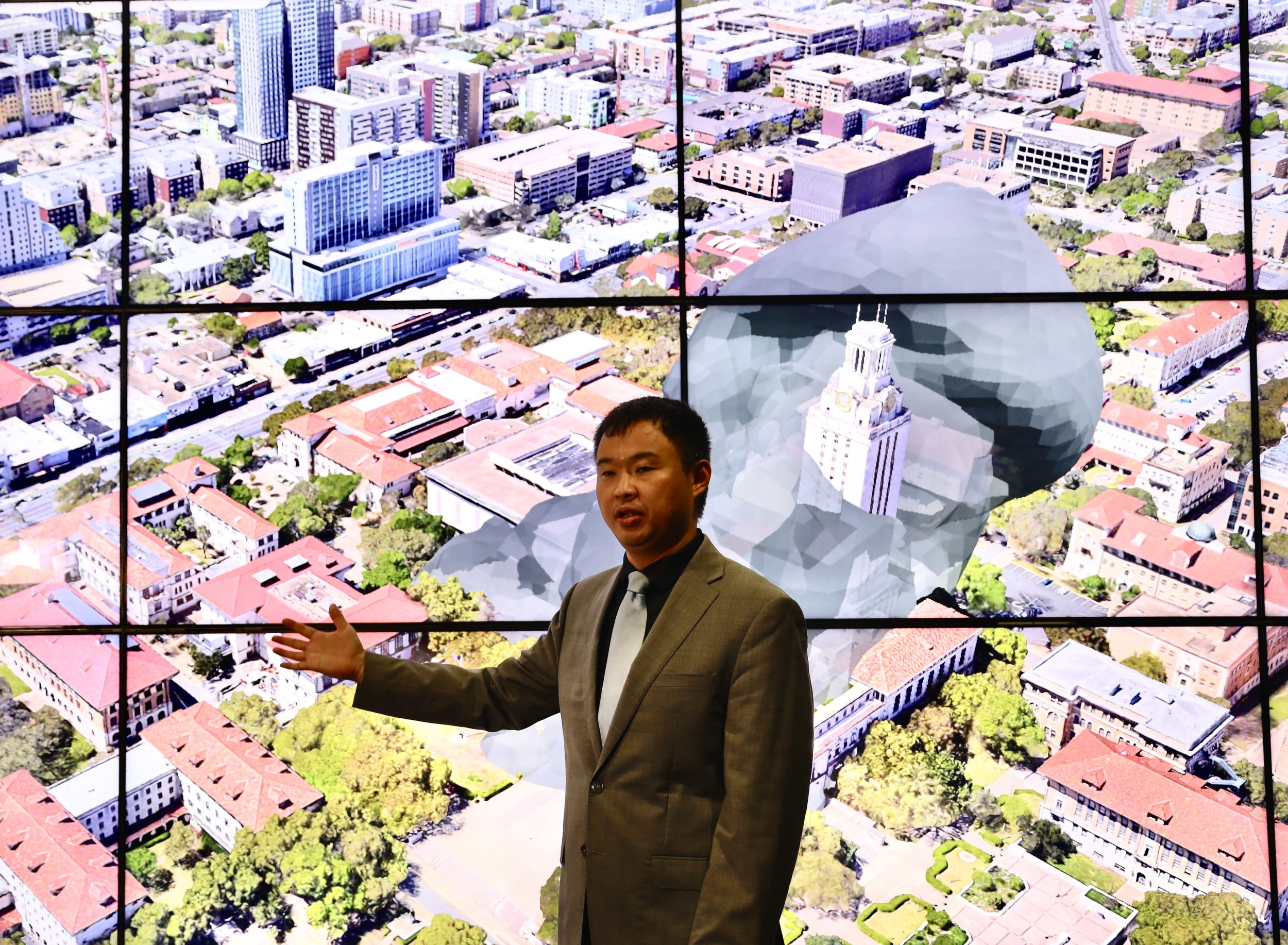
Twin City
Good Systems Project Leverages Digital Twins
to Make Austin Smarter
Junfeng Jiao, an associate professor in the Community and Regional Planning program at the School of Architecture, gives a demonstration of his team's Fire and Smoke Digital Twin at the Texas Advanced Computing Center (TACC) Vislab.
Photo by Johnny Holden.